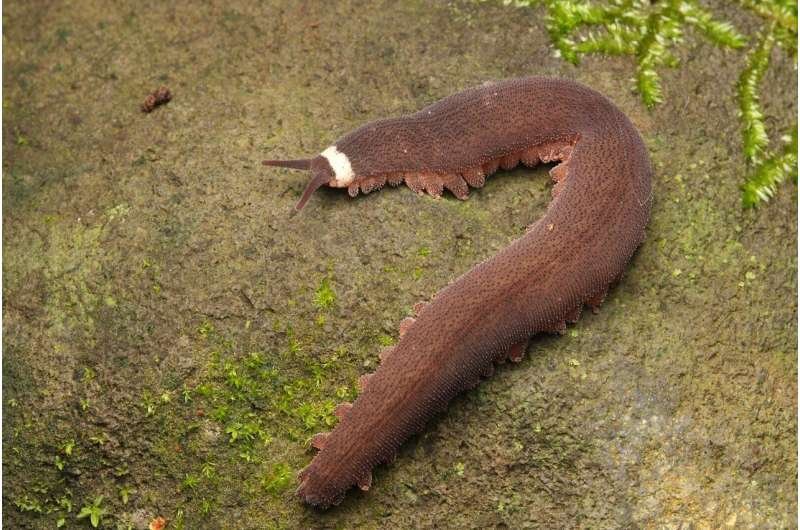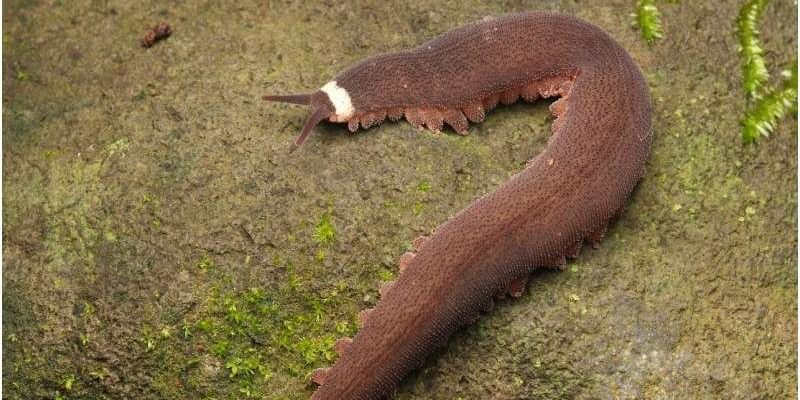
You might be wondering what makes this slime so special. Well, let me explain. Velvet worms use their slime to capture prey, protect themselves, and even communicate with one another. So, while you may not see them zipping around like other creatures, they play a crucial role in their ecosystems. Understanding the significance of this slime can shine a light on how velvet worms contribute to biodiversity and ecological balance.
What Are Velvet Worms?
Velvet worms belong to a unique group that bridges the gap between arthropods and annelids. They’re soft-bodied with a velvety texture, hence their name. Imagine a cross between a slug and a caterpillar—it’s a curious mix! You’ll typically find them in moist environments, like under leaves or inside rotten wood. They thrive in the humid, decaying underworld of forests, where they can easily blend in with their surroundings.
These creatures have a fascinating hunting strategy. Instead of running after their prey, they use their slime to ensnare them. By producing a gooey substance that can extend several times their body length, they can capture insects or small arthropods with surprising efficiency. The slime hardens upon contact, making it an effective tool for snagging a meal.
Their hunting methods not only showcase their unique biology but also highlight their role in the ecosystem. By controlling the population of certain insects, velvet worms help maintain the balance within their habitats.
The Science Behind Velvet Worm Slime
Velvet worm slime is composed of proteins and polysaccharides that give it its unique properties. When secreted, it’s a thick, viscous liquid. But here’s the interesting part: Once it comes into contact with air, it undergoes a rapid transformation. It solidifies quickly, forming a sticky web that traps unsuspecting prey. Science calls this a “shear-thinning” property, allowing it to flow easily when pressure is applied and then become rigid upon release.
This transformation is not just fascinating; it has implications for material science. Some researchers are studying the slime’s properties to understand how to replicate its features for medical and technological applications. Imagine using a similar substance for wound healing or even in adhesives! The lessons we can learn from velvet worm slime extend beyond the forest floor.
Besides its hunting abilities, the slime offers protection to the velvet worm. When threatened, they can release a substantial amount of slime, creating a barrier that confuses predators. This defensive mechanism is essential for their survival, illustrating how one adaptation can serve multiple purposes in nature.
The Role of Velvet Worms in Ecosystems
So, why should we care about these slimy critters? Velvet worms play a critical role in their ecosystems. As carnivores, they help regulate the populations of insects and small arthropods, ensuring that no one species becomes too dominant. This balance is crucial for the health of the forest ecosystem.
Their hunting also contributes to nutrient cycling. When velvet worms capture and consume their prey, they help break down organic material, returning nutrients to the soil. This process supports plant life, which in turn sustains the creatures that depend on those plants for food and shelter.
In addition, velvet worms are prey for larger animals, including birds and mammals. Thus, they form an integral part of the food web. Losing them could disrupt local ecosystems, leading to cascading effects that may not be immediately visible.
How Velvet Worms Adapt to Their Environment
Velvet worms have some pretty clever adaptations that help them survive in their moist, forest homes. For starters, they have a unique mode of locomotion. Unlike most worms, they have tiny legs, which they use to crawl through the underbrush. This helps them navigate their environment efficiently, searching for food and shelter.
These creatures are also nocturnal, meaning they’re most active at night. This behavior helps them avoid predators and reduces water loss, which is vital in their humid habitats. Think of it like a night owl strategy—while everyone else is asleep, they’re out there doing their thing.
Temperature and moisture levels are crucial for their survival. Velvet worms thrive in high humidity and moderate temperatures, which is why you usually find them in lush, tropical, or subtropical rainforests. By adapting to these specific conditions, they’ve carved out a niche and continue to play their role in the ecosystem.
The Connection Between Velvet Worms and Biodiversity
The disappearance of any species can signal problems in biodiversity. Velvet worms, while not the most glamorous creatures, are indicators of a healthy ecosystem. They thrive in environments with rich biodiversity and can serve as a barometer for environmental changes.
If you’ve ever wondered how interconnected life is on Earth, consider this: changes to velvet worm populations could reflect shifts in environmental health. As a group that is sensitive to changes in moisture and habitat quality, keeping tabs on them can help scientists understand broader ecological issues.
Furthermore, **preserving biodiversity** means protecting these unique creatures and their habitats. The more we learn about velvet worms and their slime, the more we can appreciate the delicate balance of life in our forests. Understanding their role can foster a sense of responsibility toward conservation efforts, ensuring these fascinating worms—and the many species they interact with—continue to thrive.
Velvet worms and their slime may not be on everyone’s radar, but their ecological significance is hard to ignore. From their unique hunting methods to their role in maintaining ecosystem balance, these ancient creatures have much to teach us about nature.
Understanding the **ecological significance of velvet worm slime** invites us to appreciate the complexity of life in our forests. It reminds us that every creature, no matter how small or seemingly insignificant, plays a vital role in the tapestry of life. So, the next time you think of slime, remember the velvet worm and its powerful contribution to our planet’s health and biodiversity.

